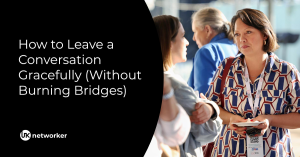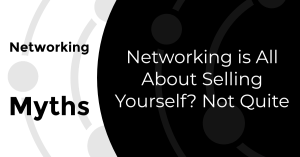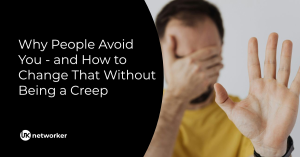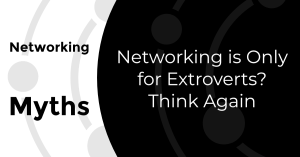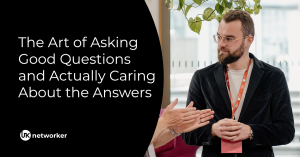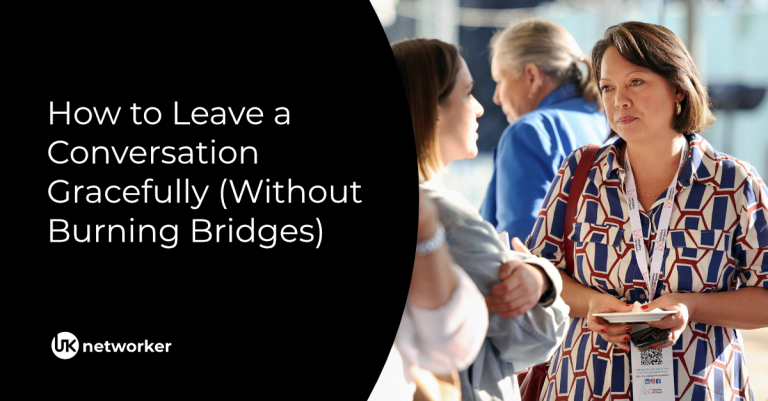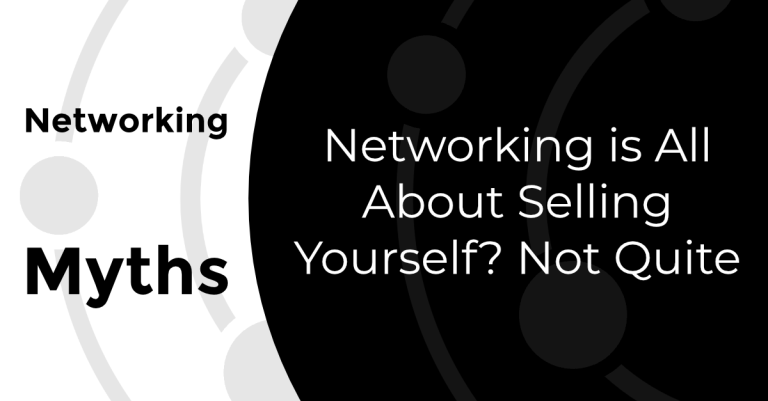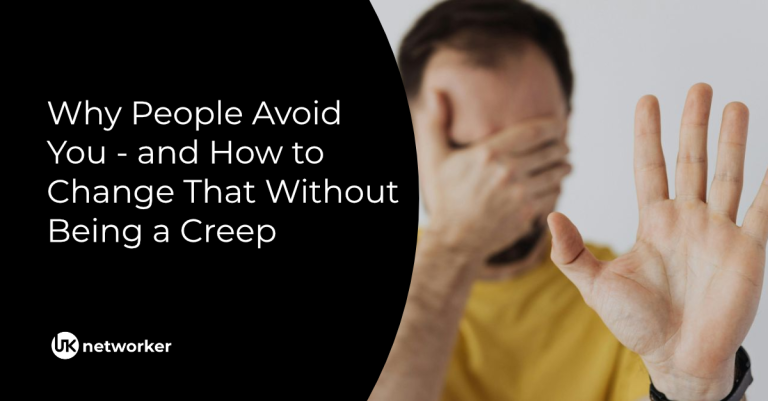For all the energy that goes into getting to an event, showing up, and making connections – there’s one part of the process that often slips through the cracks. The follow-up.
Not because people don’t care. Most professionals want to keep the momentum going. But life kicks back in. The work piles up. The perfect message never quite writes itself. And the fresh connection that felt full of possibility just… fades.
It’s not a question of intention. It’s a question of rhythm. And if follow-up isn’t part of yours, it will always feel like a chore – or worse, like a missed opportunity you’re too embarrassed to fix.
Why follow-up fails
Most people know that following up matters. It’s not insight they lack – it’s integration. Follow-up often gets treated like a bonus round: “If I have time,” “If I know what to say,” “If it still feels relevant.” But that logic only holds when connections are transactional. And most of the time, they’re not. They’re human.
The real issue? We overthink it. We want to say something thoughtful, tailored, useful, sincere – and in the process of chasing the perfect message, we send none at all.
What changes when it’s a habit
When follow-up becomes part of your natural rhythm – a habit, not a heroic effort – everything softens. There’s less pressure to say the right thing, and more focus on simply keeping the thread alive.
At UKNetworker, we hear the same frustration all the time: “I met some great people. I just didn’t get round to reaching out.” It’s not laziness. It’s friction. The aim isn’t to push harder – it’s to remove what gets in the way.
Make space for it, on purpose
Good habits don’t happen by accident. The best follow-up routines are built in. That might mean blocking 20 minutes the morning after an event. Or writing your messages on the train ride home. Or saving short voice notes in your phone straight after the event while the interaction is still fresh.
The method doesn’t matter. The space does. If you’re not planning to follow up, you’re planning to forget.
Keep it simple, and keep it real
The most effective messages aren’t long or clever. They’re human. They sound like something you’d actually say out loud. A few examples:
- “Really enjoyed chatting at [event name] – hope we can stay in touch.”
- “Meant to drop a note sooner – great meeting you. Let me know if you fancy a proper catch-up sometime.”
- “Still thinking about our conversation on [topic] – I’d love to hear more of your take.”
You don’t need to summarise your whole interaction. You just need to reopen the door.
Don’t let lateness kill the connection
So what if it’s been five days? Or three weeks? The moment hasn’t vanished – and most people are glad to hear from you even if the timing’s a little off. The trick is to avoid apology overload. Acknowledge the gap, then get on with it. People respect realness more than punctuality.
And if you’re not sure how to break the silence? Just say so. “I should have reached out sooner, but didn’t want to let it drop completely.” That kind of honesty holds weight.
Choose the right medium
Not all follow-up needs to be email. Sometimes a LinkedIn message is more natural. Sometimes a short WhatsApp or even a voice note lands better. If the original chat was casual, keep that tone. If it was about collaboration or work, adjust accordingly. Let the vibe of the connection shape how you reach out – not just what’s most formal.
Shift your mindset
In the end, follow-up is about more than manners. It’s how reputations are built. The professionals people remember – the ones they refer, trust, and reconnect with – are rarely the loudest in the room. They’re the ones who show up, stay present, and carry the conversation forward when most others don’t.
That kind of consistency builds something. Not just visibility, but value. And in spaces like UKNetworker, where relationships matter more than algorithms, that’s what turns small moments into long-term traction.
If you’re tired of forgetting, fumbling, or overthinking follow-up – don’t aim for a system. Start with a shift. Treat follow-up as the second half of the event, not an optional extra. And let your future self be the kind of contact others are glad to have.

